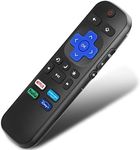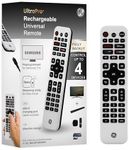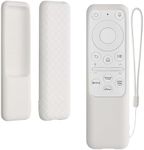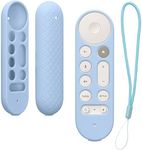Buying Guide for the Best Universal Remote Controls
Choosing a universal remote control can make managing your home entertainment system much easier by allowing you to control multiple devices with a single remote. The key to picking the right universal remote is understanding your needs—how many devices you want to control, what types of devices you have, and how simple or advanced you want the remote to be. By focusing on the main features and how they relate to your setup, you can find a remote that makes your daily routine more convenient and enjoyable.Device CompatibilityDevice compatibility refers to the range and types of devices the universal remote can control, such as TVs, soundbars, streaming boxes, and Blu-ray players. This is important because not all remotes work with every brand or device type. Some remotes are designed for basic TV and audio control, while others can handle smart home devices or gaming consoles. When choosing, check which devices you want to control and make sure the remote supports them. If you have a simple setup with just a TV and soundbar, a basic remote will do. For more complex setups with multiple devices, look for a remote with broad compatibility.
Number of Supported DevicesThis spec tells you how many separate devices you can control with one remote. Some universal remotes can handle just two or three devices, while others can manage eight or more. If you only need to control a TV and a streaming box, a remote with support for a few devices is enough. If you have a home theater system with several components, choose a remote that can handle all of them at once. Think about your current devices and any you might add in the future.
Programming MethodProgramming method describes how you set up the remote to work with your devices. Some remotes use manual code entry, where you input a code for each device, while others offer automatic code search or even app-based setup. Manual code entry can be time-consuming but works well for simple setups. Automatic or app-based programming is easier and faster, especially if you have many devices or brands. If you prefer a quick and user-friendly setup, look for remotes with automatic or app-based programming.
Control Type (Infrared, Bluetooth, RF, Wi-Fi)Control type refers to how the remote communicates with your devices. Infrared (IR) is the most common and works with most TVs and audio equipment, but requires line-of-sight. Bluetooth and RF (radio frequency) can control devices through walls or cabinets, and Wi-Fi remotes can even control smart home devices or work with voice assistants. If your devices are in open view, IR is usually enough. If you want to control devices hidden in cabinets or use smart features, consider a remote with Bluetooth, RF, or Wi-Fi.
Button Layout and CustomizationButton layout and customization refer to how the buttons are arranged and whether you can program them for specific functions. A simple layout is easier for basic use, while more advanced remotes offer customizable buttons for macros (multiple actions with one press) or favorite channels. If you want a straightforward experience, choose a remote with a clear, simple layout. If you like to personalize your controls or automate routines, look for remotes with customizable buttons.
Display and BacklightingSome universal remotes have built-in displays or backlit buttons, making them easier to use in low light. Displays can show which device you’re controlling or offer touch controls, while backlighting helps you find the right button in the dark. If you often watch TV at night or want a more modern interface, consider a remote with these features. For daytime use or simple setups, a basic remote without a display or backlighting may be sufficient.



















